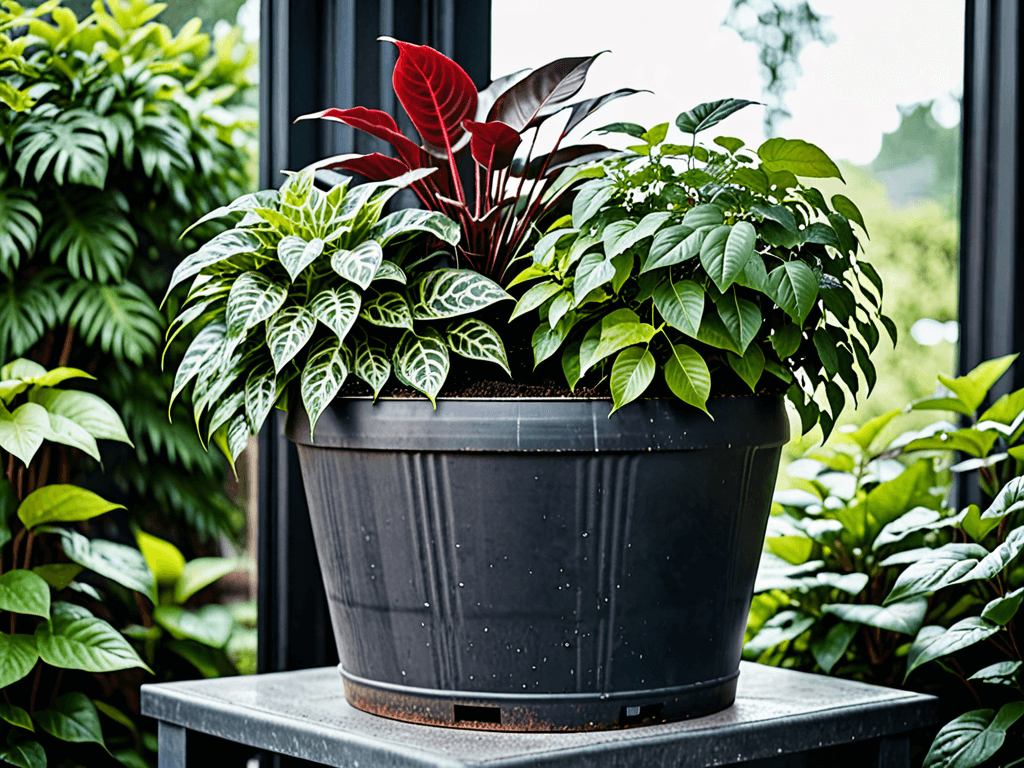Container Gardening is a versatile way to bring lush greenery into any space, from small balconies to expansive patios.
It allows garden enthusiasts to explore their creativity and enjoy the benefits of gardening without the need for a traditional garden plot.
Whether you are a seasoned gardener or a beginner, this guide will provide you with essential tips and inspiration to create your perfect container garden.
Let’s dive into the world of Container Gardening and discover how to transform your living space effortlessly.
Understanding Container Gardening
Container Gardening offers the flexibility to grow flowers, vegetables, or herbs in a limited space.
It involves using various containers such as pots, boxes, or barrels, making gardening accessible for urban dwellers or those with limited space.
This method not only allows for mobility—enabling plants to be moved according to sunlight needs or weather conditions—but also caters to aesthetic preferences by choosing stylish or decorative containers.
Understanding container gardening is key to maximizing plant health and productivity.
Key factors in container gardening include container choice, soil type, and plant selection, all of which depend on environmental conditions and space availability.
Beginners can start small, experimenting with different plants and designs to create a personal green oasis in their living area.
Benefits of Container Gardening
Container Gardening offers a variety of benefits, making it an ideal choice for urban settings. One of the primary advantages is space efficiency. Whether you have a small patio, balcony, or even a windowsill, you can create a lush garden environment. It’s an excellent choice for those seeking to maximize limited areas by stacking containers or utilizing vertical space.
Additionally, container gardening reduces weed issues and offers better control over pests and diseases. You can also control soil quality, tailoring it to suit specific plants, which promotes healthier growth.
Container gardens are mobile, allowing you to move them to optimal locations for sunlight or protection from harsh weather conditions. This mobility ensures plants remain healthy and thrive, regardless of environmental changes.
Moreover, it encourages creativity as gardeners can experiment with diverse plant combinations and decorative containers, adding a personal touch to their green space.
Choosing the Right Containers
Choosing the right containers is crucial for successful container gardening. It is essential to consider size, material, and drainage when selecting containers for your plants.
The size of the container should match the growth requirements of the plant; larger plants often need more extensive containers to accommodate their root systems.
Materials like plastic, clay, and ceramic have different benefits.
For instance, while plastic containers are lightweight and retain moisture well, clay pots provide good airflow to roots and offer a classic look.
Ensuring proper drainage is essential to prevent root rot; therefore, look for containers with adequate drainage holes.
If necessary, create additional holes or add pebbles to enhance drainage.
Additionally, the color and style of the container can complement your home decor, making your garden not only functional but also aesthetically pleasing.
By carefully considering these factors, you can create an ideal environment for your plants to thrive.
Selecting Suitable Plants
Selecting suitable plants is a pivotal step in successful container gardening. Consider the growing conditions available, such as sunlight, temperature, and space, which will dictate plant choices.
Sun-loving plants like tomatoes and peppers need locations with full sun exposure, while shade-tolerant plants like ferns and hostas thrive in less light.
Be mindful of plant sizes; smaller plants suit compact containers, while larger species require more space.
It’s important to choose plants with similar water and soil requirements to ensure compatibility in shared containers.
Additionally, opt for varieties bred specifically for containers, as they are often more resilient and compact in growth.
By understanding each plant’s needs and characteristics, you can create a harmonious and visually appealing garden that flourishes in your available space.
Soil and Fertilization Tips
Soil quality is vital for healthy container gardening. Use a lightweight potting mix specifically designed for containers, as garden soil is often too dense.
A good mix retains moisture while allowing excess water to drain, preventing root rot. Add organic matter like compost to boost soil nutrients and improve structure.
Fertilization is essential because nutrients in container soil deplete over time. Use a balanced, water-soluble fertilizer, applying it every few weeks to maintain plant health.
Adjust the fertilization schedule based on plant type and growth stage for the best results. Monitoring and maintaining soil quality ensures your container plants receive the nutrients they need to thrive.
Watering and Maintenance
Proper watering and maintenance are crucial for successful container gardening. Understand the water needs of your plants, as both overwatering and underwatering can harm them.
Check soil moisture regularly by inserting a finger about an inch deep; if it feels dry, it’s time to water.
Make sure water can drain freely to prevent waterlogging, which can cause root rot.
Consistency is key; water at the same time each day to establish a routine.
Use mulch on top of the soil to reduce water loss through evaporation and keep the soil temperature steady.
Container plants may need more frequent feeding because nutrients leach out with watering.
Regular maintenance, such as removing dead leaves and checking for pests, helps keep plants healthy.
By staying attentive to these needs, you can ensure your container garden continues to flourish.
Creative Container Gardening Ideas
Container gardening allows for endless creativity. Transform old items into unique plant containers for a personal touch. Use vintage teacups for small succulents or old wooden crates for herbs.
Consider creating a vertical garden using a ladder shelf to stack pots at varying heights, adding depth and visual interest to any space. Mix and match different plant colors and textures to create stunning displays.
Arrange colorful annuals like petunias and marigolds alongside trailing vines for a dynamic look. Repurpose unused tires by painting them in bright colors and stacking them to form vibrant garden tiers.
Hanging baskets are also ideal for adding greenery at multiple levels, perfect for patios or balconies. These creative ideas enhance the aesthetics of your surroundings, turning any area into a lush retreat.
Troubleshooting Common Problems
Solve common container gardening issues by identifying the problem early. For root rot, check drainage holes and reduce watering frequency.
Yellowing leaves may indicate nutrient deficiency; use a balanced fertilizer appropriate for the plant type.
If plants wilt despite adequate watering, inspect for pests like aphids or spider mites and treat them with insecticidal soap.
Address leggy growth by providing more light or pruning plants to encourage bushiness.
Stunted growth could be a sign of compacted roots; consider repotting in a larger container.
Inconsistent watering often leads to splitting fruit or flower drop, so maintain a regular watering schedule to prevent stress.
By paying attention to these issues, your container garden can flourish with minimal complications.
Embracing Container Gardening for All Spaces
Container gardening offers flexibility and creativity, making it ideal for any environment, whether urban or suburban.
By understanding the specific needs of your plants and choosing appropriate containers, you can maximize the space and resources at your disposal.
Regular maintenance, including watering, fertilization, and problem-solving, ensures the longevity and health of your garden.
Explore unique and creative approaches to cultivate a lush and vibrant garden, no matter the size of your living area.
Embrace container gardening and transform your space into a thriving oasis.
FAQ – Frequently Asked Questions About Container Gardening
What is container gardening?
Container gardening is the practice of growing plants in containers instead of in the ground, allowing for flexible placement and mobility.
What types of plants are best suited for container gardening?
Many plants can thrive in containers, including herbs, vegetables, flowers, and small shrubs, as long as they have enough space and the right conditions.
How often should I water my container plants?
Watering frequency depends on the plant type, container size, and environment, but generally, the soil should be kept consistently moist.
What kind of soil should I use for container gardening?
Use a high-quality potting mix that provides good drainage and aeration. Avoid using regular garden soil, which can be too heavy.
Do container plants need fertilizer?
Yes, nutrients can deplete quickly in container soil, so regular fertilization is important, usually every few weeks during the growing season.
How can I prevent pests in my container garden?
Regularly check plants for signs of pests and use natural remedies or insecticidal soaps as needed to manage any infestations.
Can I grow container plants indoors?
Yes, many plants are suitable for indoor containers as long as they receive adequate light and ventilation.


